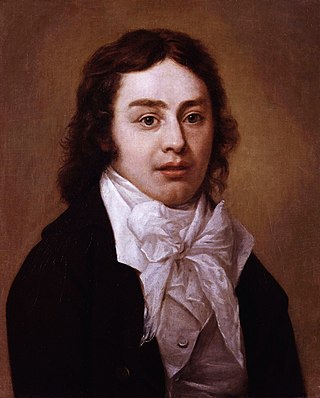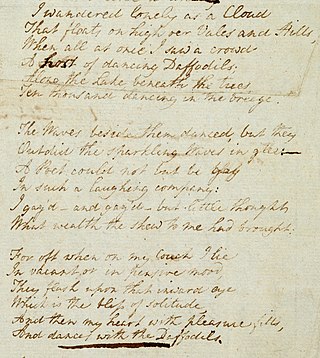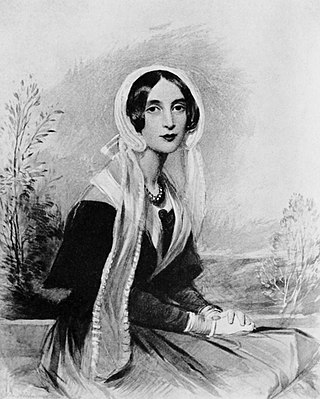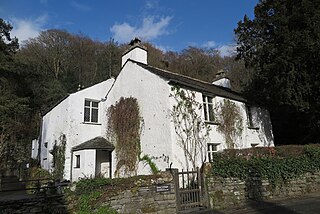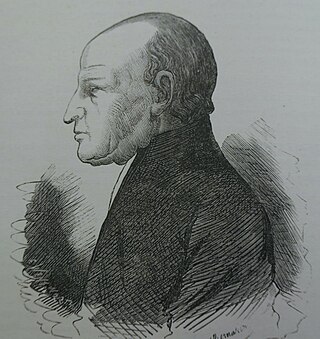The Lake poets

For Wordsworth, who settled at Dove Cottage, Grasmere, with his sister Dorothy after some years of wandering, the Lakes became bound up with his identity as a poet. Born and brought up on the fringes of the Lake District (at Cockermouth and Penrith), Wordsworth came back to the area in December 1799 and settled into a 'poetic retirement' within his 'native mountains.' Although Wordsworth did not 'discover' the Lake District, nor was he the one who popularised it the most, he "was destined to become one of the key attractions to the area, while his particular vision of his native landscape would have an enduring influence upon its future". [4] Not just a 'nature poet', his poetry "is about the organic relationship between human beings and the natural world...' [5] After a brief flirtation with the Picturesque in his Cambridge years, he came to see this aesthetic view of nature as being only one of many (although it is arguable that he "was under the sway of Picturesque theory", he frequently transcended it). [6] His 'vision' of nature was one that did not distort it in order to make art.
Wordsworth's early radical political ideas led him to his second poetic characteristic: the use of "plain language" and having for his subject the "common man" as represented by the Dales-folk (rather than "kings and queens, lords and ladies or gods and goddesses" as was the case up to then). [5] A third notable feature of his work was to do with the inward-turning of his mind, producing a semi-autobiographical take on nature and imagination: his poem The Prelude , he wrote to Dorothy, was "the poem on the growth of my own mind."

Despite this reclusive side of his personality, Wordsworth was a strong believer in family and community, and he was much concerned with the effects on (especially poor) people's way of life of social change (for example, due to the enclosure movement) that were taking place. He disliked change that flew in the face of Nature: the planting of regimented lines of Larches; the coming of the railways; new building that did not chime with the vernacular; and the building of grand houses in the Lakes by the industrialists of Lancashire particularly upset him. In 1810 he published his Guide to the Lakes , tellingly subtitled "for the Use of Tourists and Residents", and with a Section Three entitled "Changes, and Rules of Taste for Preventing their Bad Effects." [7] Nicholson argues that the Guide was the outcome of the loss of Wordsworth's poetic vision of nature and a turning outwards into hard facts in order to preserve his sanity after "years, perhaps, of disillusion, disappointment, of spiritual impotence..." [8] Another aspect of it was the link to the ideas of Uvedale Price, whom Wordsworth knew and who proposed a "conservative, historicising and non-interventionist aesthetic". [9] The Guide ran to five editions during Wordsworth's lifetime and proved to be very popular. Indeed, it has been said that "the architectural axioms of building and gardening in the Lake District for the next hundred years were established by the Guide". [9]
For other writers, the region's pull was more uncertain. Coleridge followed Wordsworth to the Lakes and moved into Greta Hall in 1800. Although identified by his contemporaries as a 'Lake Poet', Coleridge's response to the landscape was at variance with the vision of Wordsworth, leading Coleridge to identify the landscape's "Gothic elements"..."and in so doing seems to recognise a potential for psychological horror rather than solace." [10] Wordsworth's rejection of the poem Christabel , partly written at Greta Hall, for the Lyrical Ballads collection, added to Coleridge's depression over his personal life, his doubts about being able to write as he would have wished and his ill-health which was made worse by the Cumbrian climate. This led him to resort to the Kendal Black Drop, making matters desperate. Coleridge moved out of the area in 1804.

Robert Southey, it has been argued, although becoming identified as the central 'Lake Poet' (he lived at Greta Hall from 1803 to 1843), was mostly a prose writer and did not particularly subscribe to the Wordsworthian vision of the Lakes. [11] Southey, like Wordsworth, started out on the republican left, but, by the time the threat from Napoleon had dwindled, he had become the embodiment of a Tory extolling the virtues of nation and patriotism, and using the Lakes as a touchstone, and as "the symbol of the nation's covenant with God." [12]
Letitia Elizabeth Landon's sketch, Grasmere Lake, A Sketch by a Cockney, in Fisher's Drawing Room Scrap Book, 1834, is a spoof on the Lake Poets, whom she admired (especially Wordsworth) but regarded as outmoded. In her view the days of Romanticism were over.
In John Paterson's Mare, James Hogg's allegorical satire on the Edinburgh publishing scene first published in the Newcastle Magazine in 1825, the Lake Poets feature as 'a whole covey of sandpipers or water larks'. [13]
